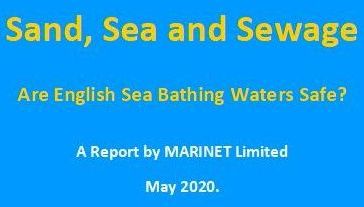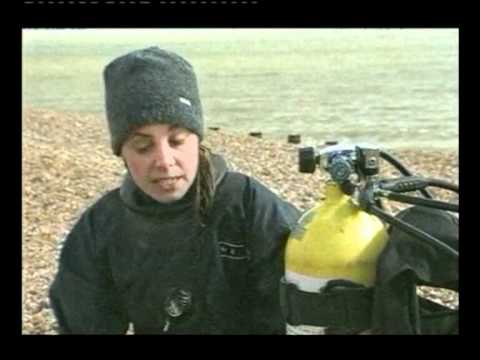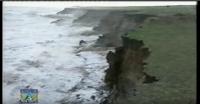Salmon farms in Scotland displaying increasing levels of sea lice infection
Salmon and Trout Conservation Scotland reports, 30th October 2017: Following the formal decision (see link below) by the Scottish Information Commissioner that Scottish Ministers unlawfully tried to withhold information naming fish farms that had breached Scottish Government trigger levels for the numbers of adult female sea lice on farmed salmon, S&TC Scotland has now received the information in question.
Link: www.itspublicknowledge.info/uploadedFiles/Decision142-2017.pdf
It shows that sea lice numbers are running out of control in much of the industry for extended periods and failures by individual farms to operate with lice numbers below Scottish Government’s trigger levels are routine.
A new sea lice regime, announced by the Scottish Government with great fanfare at the June 2016 inter-governmental North Atlantic Salmon Conservation Organisation meeting, has been operating since October 2016.
Scottish Government’s new trigger levels of 3 adult female lice per farmed salmon (at which point a “site-specific escalation plan” to reduce lice numbers is required) and 8 adult female lice per farmed salmon (at which point, enforcement action may be ordered to harvest early, reduce biomassbiomass The amount of living matter. This is therefore a different measure to numbers of organisms. So, for example, there is much more biomass in 1 elephant than there is in 1000 fleas and there may be more biomass in 100 large cod than you would find in 150 small (because of over fishing) cod. or cull-out a farm) are already very considerably more generous to the fish-farmers than the industry’s own long standing Code of Good Practice (CoGP) sea lice treatment levels of 0.5 or 1 lice per fish, depending on the time of year.
Andrew Graham-Stewart, Director of S&TC Scotland, said: “Many of the individual farms’ sea lice numbers, which have long been hidden within regional aggregated ‘averages’ published by the industry, are far worse than we envisaged. Sea lice numbers on farmed fish across much of the industry are of epidemic proportions.
“More worrying, the Scottish Government’s flagship new policy appears to be a sham, little more than a cynical ‘widening of the goalposts’ to the industry’s advantage, a policy with no teeth.”
Guy Linley-Adams, Solicitor to S&TC Scotland, said:
“The data that Scottish Government didn’t want anyone to see shows that salmon farms have been permitted to operate with breathtakingly high lice numbers for weeks or months on end. To date, no meaningful enforcement action, such as the ordering of culls or immediate reductions in fish-farm biomass, has been taken against serial offenders.
“The Scottish Government has a legal duty to protect and conserve wild salmon and sea trout, but this data shows it is failing to rein in the biggest threat to wild salmonids.”
Key findings from the published data include the list of those farms that breached the 3 and/or 8 trigger levels includes farms from all the large fish farming companies and most smaller ones.
Note: The figures cover the period extending from week 43 in 2016 (November) to week 35 in 2017(end August) inclusive. The first number following the name of a farm refers to the number of reported weeks with adult female lice counts between 3 and 8, and the second number refers to the number of reported weeks above 8).
The worst performing company in the Scottish Islands and overall worst performing company in Scotland was Grieg Seafood Shetland Ltd. Its farms’ figures were — North Papa (14 & 12), North Havra (14 & 6), Spoose Holm (17 & 8), Leinish (13 & 6), Score Holms (18 & 11), Gob na Hoe (17 & 6), Corlarach (12 & 5), West of Burwick (13 & 5), Langa Isle (East) (10 & 8).
Mr Graham-Stewart commented: “Grieg Seafood’s lamentable record exemplifies the very widespread failure to control sea lice in the Shetlands. It is no wonder that mature wild sea trout are being wiped out in these islands.”
The worst performing company in the West Highlands was The Scottish Salmon Company. Its concentration of farms in Loch Fyne (Argyll) include figures of — Quarry Point (6 & 5), Ardcastle Bay (15 & 6), Strondoir Bay (3 & 3), Gob a Bharra (6 & 0) and Furnace Quarry (0 & 7).
Furnace Quarry farm was allowed by Scottish Government inspectors to continue to operate despite an astonishing sequence of seven weeks, with adult female lice numbers ranging from 15 to 23 per farmed fish.
Mr Graham-Stewart commented:“The release of free-swimming stage lice into Loch Fyne from The Scottish Salmon Company’s farms in 2016 through to 2017 would have been astonishingly high. Given the company’s inability to control sea lice in Loch Fyne, and elsewhere, it should face serious penalty.
“It is shameless that The Scottish Salmon Company’s managing director was only two weeks ago bemoaning the amount of ‘red tape’ he has to deal with. It is now also plain why the industry was so determined earlier this year to prevent a fact-finding visit to Loch Fyne by MSPs from the Scottish Parliament’s Rural Economy and Connectivity Committee.”
The worst performing smaller operator was Loch Duart Ltd. Its mainland farms’ figures included Clashnessie Bay (10 & 6) and Loch Laxford (15 & 5).
Mr Graham-Stewart commented: “Loch Duart’s prolonged failure to control sea lice, despite the company’s over-trumpeted use of cleaner fish, is evidence that cleaner fish such as wrasse or lumpfish are simply not the panacea the industry’s constant spinning suggests.”
Late last year and this year, S&TC Scotland made a number of requests for information for details of those farms that had notified Marine Scotland that the new Scottish trigger levels had been exceeded, but Scottish Ministers had declined to provide the information, on the basis that to do so would cause “substantial prejudice” to the interests of the fish farmers which had provided the information.
After two separate and detailed referrals by S&TC Scotland, the Scottish Information Commissioner ruled that arguments put forward by S&TC Scotland, for full disclosure of the names of the liciest fish farms in Scotland, were correct, and that the Scottish Ministers had unlawfully tried to prevent public scrutiny.
Guy Linley-Adams, Solicitor for S&TC Scotland, said: “It is now abundantly clear why Scottish Ministers tried so hard to prevent the publication of individual salmon farm figures and thus shield the Scottish salmon farming industry from proper public scrutiny.
“It is to Scottish Ministers’ shame that it took a formal legal referral to the Scottish Information Commissioner from a conservation charity to make them recognise the obvious legitimate public interest in identifying poorly-run poorly-managed fish farms, so that consumers can avoid buying fish from those farms and those suppliers.
“The true extent of the failure of salmon farms to control sea lice is astonishing. Claims that the situation is under control are risible and we will now write to the supermarkets asking them to stop selling salmon from the worst-performing farms.”
Latest industry aggregated figures show the sea lice problem is getting worse.
Across the industry as a whole, the upward trend in failure of salmon farms to control sea lice and stay below the Code of Good Practice (CoGP) threshold of 1 or 0.5 adult female sea lice per farmed fish continues.
The graph below, drawn up using SSPO data, shows that regions covering 61.4% of total farmed salmon production in Scotland were over CoGP thresholds in June 2017, the last month for which aggregated sea lice data has been published.

The Scottish fish farming industry, commenting on these statistics, suggest that even for that 1/3 or so of the industry that does remain below CoGP thresholds for sea lice, Marine Scotland scientists recognise that: “…adherence to the suggested criteria for treatment of sea lice stipulated in the industry CoGP may not necessarily prevent release of substantial numbers of lice from aquaculture installations”.
A formal Petition, at www.parliament.scot/GettingInvolved/Petitions/PE01598 , lodged in the Scottish Parliament in February 2016 by S&TC Scotland, seeking protection for wild salmonids from sea lice from Scottish salmon farms, has resulted in MSPs launching an Inquiry into the salmon farming industry in Scotland.
The Rural Economy and Connectivity Committee of MSPs agreed at Holyrood in July (at www.parliament.scot/parliamentarybusiness/report.aspx?r=11034), to conduct a full-blown Inquiry into salmon farming in Scotland and the issues raised in S&TC Scotland’s Petition.
Guy Linley-Adams continued: “Scottish Ministers need to rethink radically their approach to the salmon farming industry and to end their unconditional support for the industry in the face of this and other equally shocking environmental data now being revealed about its performance.
“Ministers must also stop trying to protect salmon farmers from legitimate criticism.
“We also call upon the industry itself to end both its tobacco-industry style denials about the damage it causes and the ‘tit for tat’ accusations it repeatedly makes, in favour of embracing the positive change that must now come.”
Source: Issued by Andrew Graham-Stewart (telephone 01863-766767 or 07812-981531) on behalf of Salmon & Trout Conservation Scotland. For more information please contact email hidden; JavaScript is required, 07837-881219 or 01432-379093.
Further information on the S&TC Scotland salmon farming campaign is available at www.salmon-trout.org/countries/scotland and
www.salmon-trout.org/2017/10/30/scotish-salmon-farmings-liciest-farms-named-and-shamed
Comments: A selection from comments posted on S&TC Scotland website:
■ Simon Smith says: 6th November 2017 at 4:06pm
“After being able to eventually winkle this information from the Scottish Government is there any way to hold them to account for not upholding the companies involved to the required standards?
“But well done STCS, you have done sterling service to all that hold our salmonid stocks dear in our hearts.
□ Reply: 9th November 2017 at 4:04pm
“Thanks — the Parliamentary Inquiry into salmon farming and its impact on wild fish – which was announced as the result of our petition and video on the demise of Loch Marie as a sea trout fishery — is scheduled for early next year, and we will be putting a large evidence dossier to the Committee at that time. This will include draft amendments to legislation that gives the Government the legal responsibility to protect wild fish from salmon farming — incredibly, the Government only has responsibility for the welfare of fish in the cages!
■ Andrew Duncan says: 6th November 2017 at 6:40pm
“These figures should be shown to the outlets who sell their fish. With the general public being asked not to shop there until they remove the products or the fish farms clean up after their act.
□ Reply: 9th November 2017 at 4:06pm
“Thanks — we have plans to do just that!
■ William Hare says: 6th November 2017 at 6:56pm
“The problem is not only the appalling fact that these lice- infested salmon enter our food supplies. There is the additional effect on wild sea trout: lice which drop off treated salmon in the sea loch cages migrate to the inshore habitat of sea trout, which have been virtually wiped out over the last decade.
□ Reply: 9th November 2017 at 4:09pm
“Just to reiterate — our campaign is purely about protecting wild salmon and sea trout from the impacts of salmon farming, particularly sea lice infestation and escapee farmed fish breeding with wild salmon and diluting genegene A string of the DNA (deoxyribonucleic acid) molecule that is the fundamental unit of inheritance, so it is variations in the make up of this molecule in the gene that controls variations in an organism's appearance and behaviour. Genes are found in the nucleus of the organism's cells. pools. Sea lice are not a human health risk (as far as we know!) and, anyway, they are long gone from the farmed salmon product by the time it reaches the supermarket.
■ Simon McCormick says: 8th November 2017 at 5:29pm
“What are the statutory sanctions for allowing higher levels of lice per salmon than is permitted? What action, if any, has been taken by the relevant authorities?Have any sea trout fisheries taken any legal action arising out of their losses?
□ Reply: 9th November 2017 at 3:54pm
“Very little action so far.
“If 3 female lice are found on farmed fish, the farm must produce a management plan to reduce numbers. Only when 8 lice are reached does the regulator step in, and even then there is no statutory requirement to insist, for instance, on early harvesting the farm.
“In the Faroe Islands, if 1.5 lice are counted on 3 successive visits, then the farm must compulsory slaughter and will only be allowed half the biomass on next year’s licence.
“As far as we are aware, no sea trout fishery has taken an action — it is almost impossible to say that those lice from that farm were responsible for the collapse.


























